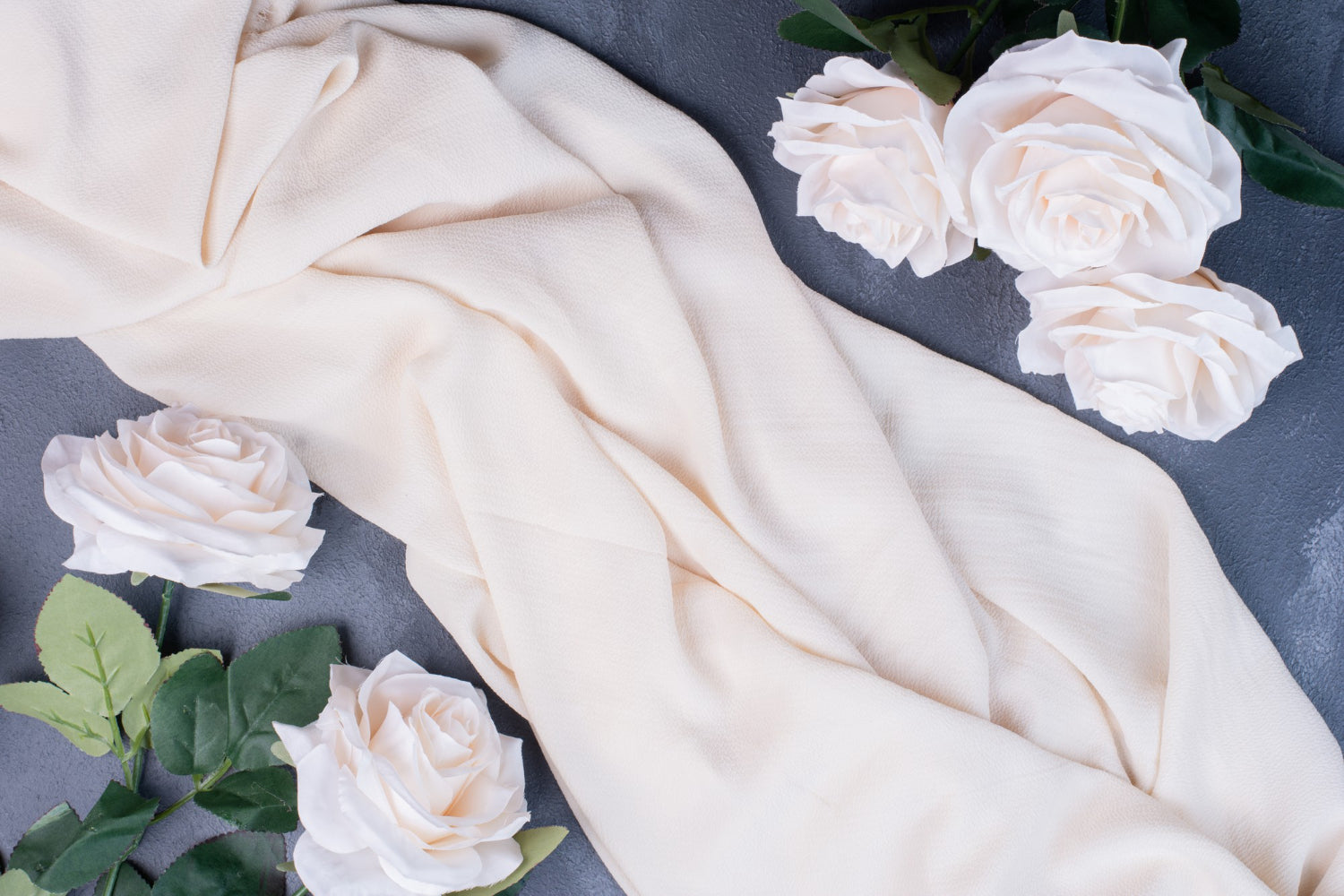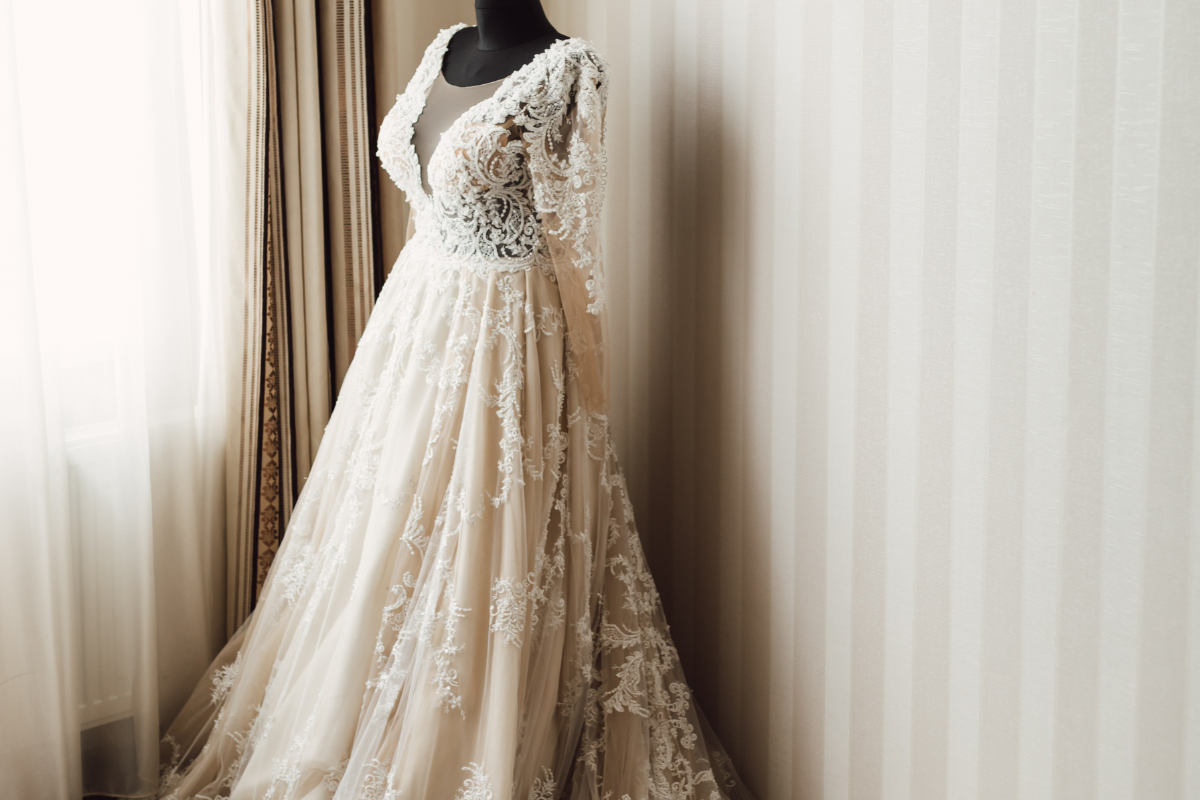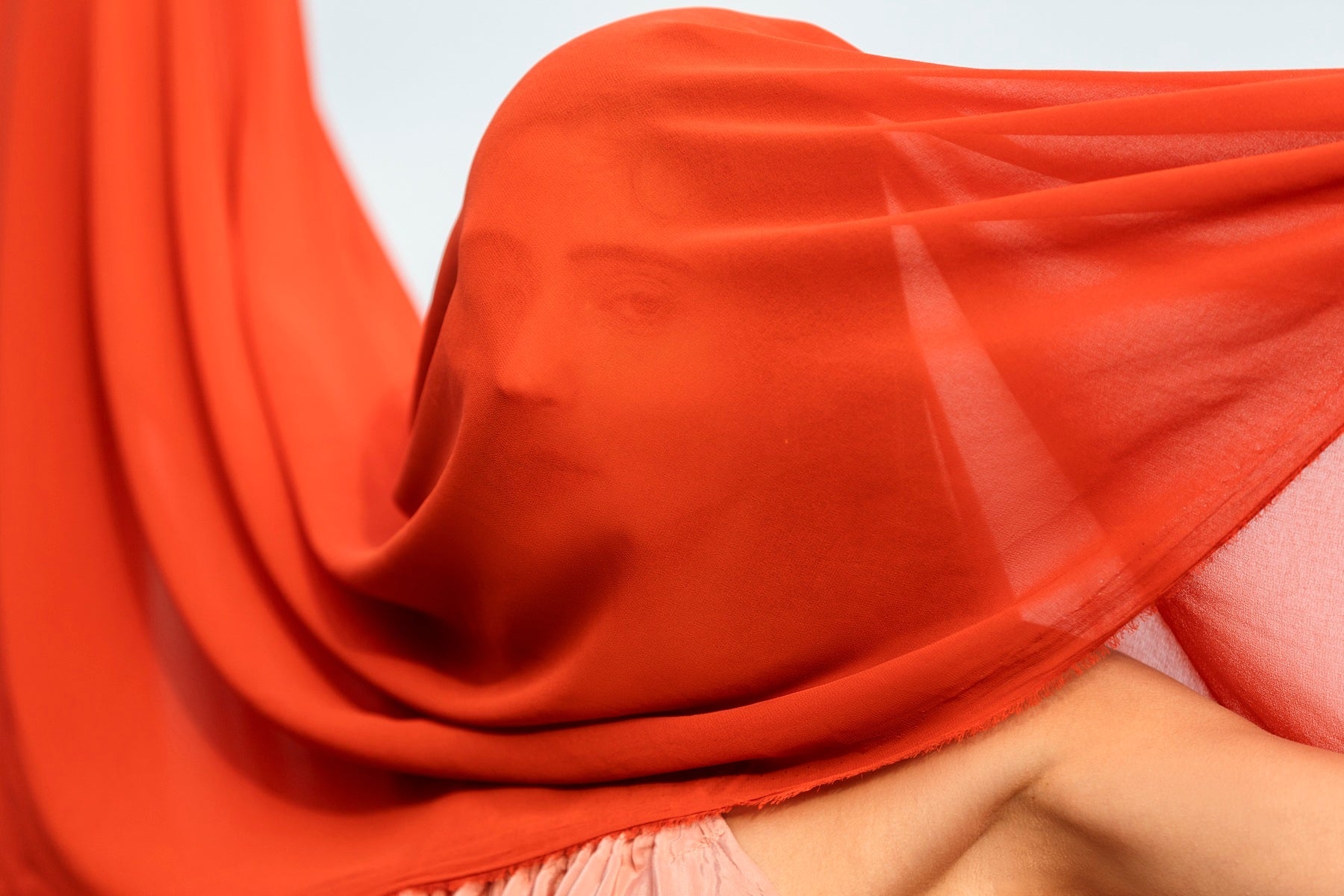Chiffon and georgette can be confusing. At first glance, they look pretty similar. Both are soft, elegant, and often used in dresses, sarees, or flowy tops. But once you touch them or try them on, the difference becomes obvious.
Chiffon is light, sheer, and feels like wearing air. Georgette is a bit heavier, with a grainier texture that adds structure without making the fabric stiff. They drape differently. They move differently. And depending on what you’re wearing or designing, that matters.
So, how do you know which one to choose? That’s what this guide is for. We’re breaking down the feel, fit, and function of chiffon vs. georgette, so your next outfit or fabric choice actually matches the vibe you’re going for.
What is Chiffon?

Chiffon fabric is thin, light, and almost see-through. It feels soft when you touch it, slightly rough, but smooth enough to glide across the skin. Most people recognize it by how it moves. It floats. It catches the air. That's what makes it so popular for layers and drapes.
Originally made from silk, chiffon today is often woven from polyester or nylon to make it easier to care for. Still, silk chiffon is the high-end version, characterized by a more delicate texture, greater fluidity, and higher cost. The weave itself is tight but fine, which gives it that sheer, barely-there look.
Style & Use Cases
Designers love chiffon for anything soft and romantic. You’ll see it in a flowy dress, a ruffled blouse, a long gown, or a wispy scarf that barely touches the shoulders. It’s also used in chiffon sarees for an elegant, almost weightless look.
Because chiffon moves so well, it’s a favorite for formal outfits, especially party wear. It doesn’t add bulk, and it drapes in a way that feels effortless, even dramatic, without being loud.
What is Georgette?
Georgette has more weight and texture than chiffon. It’s not see-through like chiffon either; this fabric is opaque, with a slightly rough, grainy surface, you can feel as soon as you run your hand over it. That graininess comes from its crepe weave, which gives the fabric a matte look and a slightly crinkled finish.
Most georgette fabric today is made from silk or synthetic fibers like polyester. The silk version feels a bit softer and more breathable, but both types offer the same signature drape, with just a bit more grip and structure compared to chiffon.
For a fuller breakdown of drape, care, and styling tips, read chiffon fabric uses and benefits before you lock in your choice.

Style & Use Cases
Since georgette has more weight to it, the fabric naturally holds its shape. That’s why it works well for pieces with structure, like a tailored blouse or a layered skirt that needs just the right amount of flow without going limp. It also shows up in full-length dresses that need a little volume, but still move when you walk.
One of its standout uses? Georgette sarees. The extra weight helps them drape smoothly and stay in place, unlike chiffon, which can be slippery and a bit harder to manage.
You’ll also find georgette in a lot of party wear. It gives that floaty look people love, but with more coverage and control. So if you want something that looks soft but stays put, georgette hits that balance.
Chiffon vs Georgette: Key Differences Explained
Chiffon and georgette have their similarities. Both fabrics are soft and flowy. They're also both traditionally used in dresses, sarees, and scarves. However, there are several key differences you should be aware of.
Chiffon is the lighter and more delicate of the two fabrics. It has a sheer, airy quality that makes it almost float. The surface feels smooth, and it's often described as slippery or silky.
Georgette is a heavier material to begin with. It tends to feel dry and slightly grainy. This is because of its crepe-style weave. The fabric has more grip than glide, and its finish is matte instead of glossy.
Still not sure which one fits your style or project? Here's a closer look at how georgette vs chiffon compare across texture, drape, and overall feel:
Texture
- Chiffon: Is sheer and smooth with a slight stretchiness.
- Georgette: Is grainy and dry, with a pebbled surface.
Drape and Movement
- Chiffon: Light and fluid. It flows easily.
- Georgette: Still drapes well, but has more weight and control.
Finish
- Chiffon: Semi-transparent with a subtle sheen.
- Georgette: Opaque and matte, with no shine.
Feel on Skin
- Chiffon: Airy, cool, and barely there.
- Georgette: Textured but soft; has a slight grip against the skin.
Ideal Use
- Chiffon: Great for overlays, ruffled gowns, or romantic silhouettes.
- Georgette: Best for structured blouses, skirts, and layered looks.
Fabric Weight & Drape
Chiffon barely weighs a thing. It’s thin, airy, and moves the moment you do. That’s why it’s so popular for layered looks or dresses that need to feel soft and light. It hangs gently, more like it floats than drapes, and never adds bulk.
Georgette has a different feel. It’s heavier than chiffon, not heavy in a stiff way, but enough to give the fabric shape. You can feel the weight when it hangs, it doesn’t float, it drops. The drape is still soft, just more controlled. That’s what makes it great for flowy skirts, layered blouses, and sarees that need to stay in place.
When to Choose Chiffon or Georgette

📸 Image by Ольга Солодилова
Occasion-Based Suggestions
Some fabrics just match the mood. If you’re dressing for a soft, romantic vibe, like something that moves gently and feels light, chiffon is the way to go. It’s perfect for wedding gowns, sheer overlays, or an ethereal look. Anything that needs to feel floaty and feminine works well with chiffon.
Georgette is better for structure. If you're wearing something that needs more shape, like a layered saree, a tailored blouse, or a dramatic peplum top, you’ll want the extra weight and grip that georgette offers. It’s still fluid, but it knows how to hold its ground. That makes it ideal for more defined silhouettes in formal dresses, skirts, or structured party pieces.
Climate, Care & Comfort
When it comes to comfort, the season matters just as much as the style. Chiffon is light, airy, and breathable, which makes it ideal for warm-weather outfits. It’s a go-to for summer weddings, outdoor events, and travel looks where staying cool is key. That said, it’s also slippery and delicate, so it can shift around easily and snag if you’re not careful.
Georgette, being opaque and a little heavier, works better for cooler months or indoor settings. It’s great for layering, especially when you want something structured that doesn’t overheat you. It also wins points for practicality. Unlike chiffon, georgette doesn’t wrinkle as easily and holds up better during washes, which makes maintenance a lot simpler.
If you're after something easy to wear and care for, georgette is the low-fuss option. Chiffon is gorgeous, but it asks for a bit more attention.
Fabric Origins & Fiber Blends
Silk vs Synthetic Fibers
Chiffon and georgette both come in two main versions: natural and synthetic. You’ll find them made from silk or synthetic fibers, like polyester, and that choice makes a big difference.
Silk chiffon feels softer and cooler, and the drape is hard to beat. You can tell right away when you touch it, it’s smoother, lighter, and just feels expensive. The same goes for silk georgette. It’s still a bit grainy like you’d expect, but the texture is more refined.
Now, polyester options are everywhere. They look similar, and they’re definitely easier to care for. They don’t wrinkle as much and cost less, which is a win for everyday outfits or large batch production. You give up a little in breathability and comfort, but you get durability and lower maintenance in return.
So, if you're going for luxury, silk is the way to go. If you need something practical, polyester works just fine.
Modern Innovations in Blends
Not all chiffon or georgette feels the same anymore. These days, you’ll see plenty of fabrics made from a mix of silk and polyester, and the difference shows up in both comfort and durability. Some blends look almost like pure silk, but they’re easier to care for and hold their shape better after a few wears.
Crepe fabric used to be heavy and stiff. However, newer versions, especially those made from crepe georgette, now have a softer drape and a smoother feel. Polyester chiffon has come a long way, too. It’s not as delicate as silk, but it still moves well and costs less, which makes it popular for everyday wear.
There’s also been more focus on lining fabric lately. Designers are using lighter linings that don’t take away from the flow of the outer layer. That means sheer or layered looks still feel breathable, not bulky or stiff.
All of this makes modern blends more wearable. You still get that soft, flowy look but with less fuss and more flexibility.
Final Thoughts
Chiffon and georgette aren’t the same, and once you’ve worn both, you’ll feel it. Chiffon is light and floaty, almost fragile. Georgette’s got more weight and grip, and it hangs with more control. One isn’t better than the other. It really depends on what you need, how the fabric should move, the level of coverage you want, and how easy it needs to be to care for.
If you’re going for soft and dreamy, chiffon is probably the one. If you want something with a little more shape, go with georgette. And if you're still unsure, feel them both in person if you can. Your hands will tell you more than a product tag ever will.




